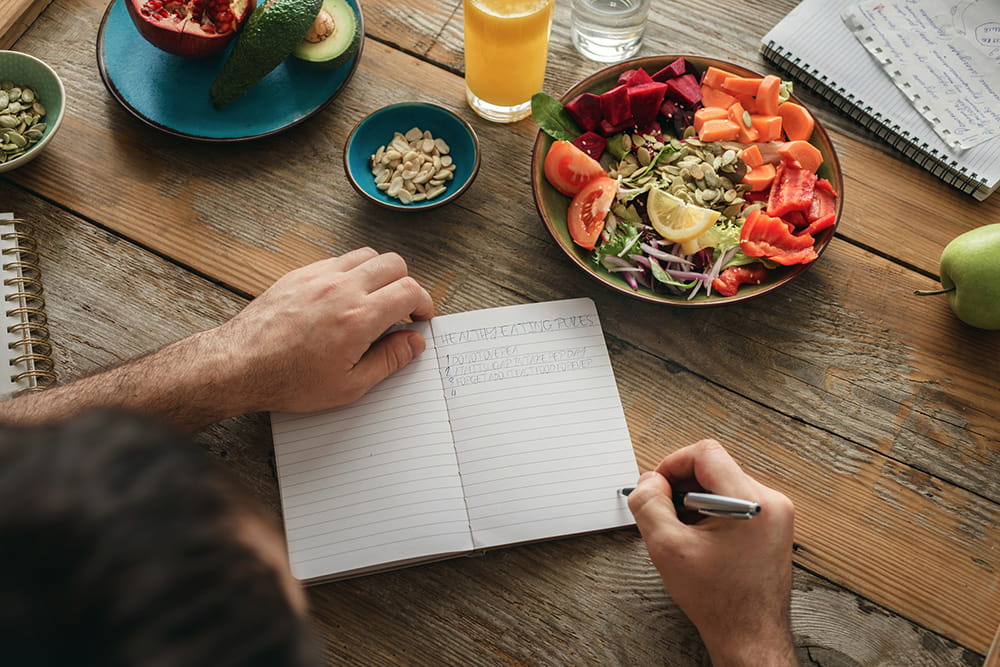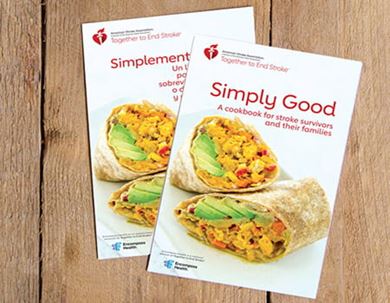Meal Prep

Here are a few tips to help you stay ahead.
Create a weekly meal plan. This will help you save time and have more varied and healthy meals. Make your grocery list based on the store layout for easy and efficient shopping.
When grocery shopping, look for foods that have the American Heart Association Heart-Check mark on the front of the package. This mark helps you easily make healthy choices.
Seek pre-cut or pre-chopped meats and vegetables at the grocery store. Or do your prep work ahead of time when you feel up to it or have more energy. Store pre-cut foods in a resealable bag or airtight storage container in the refrigerator and use within one or two days.
Use rubber grip mats under your bowls and cutting boards to keep them securely in place.
Use a cutting board with suction cups for one-handed cutting.
Stock your kitchen with knives with a good rubber grip, rocker knives and manual or electric processors. These are all good tools for cutting, chopping and shredding.
Other helpful items include utensils with suction or non-skid/non-slip features and one-handed jar, can and bottle openers.
Use a household kitchen or dining chair to provide support while standing and to take rest breaks.
A microwave oven can be a great time saver. For easier access, install it at counter height.
A slow cooker is another alternative to stovetop cooking. It lets you select the shut-off time, so you won’t overcook your meal and it frees up the time spent at the stove.
